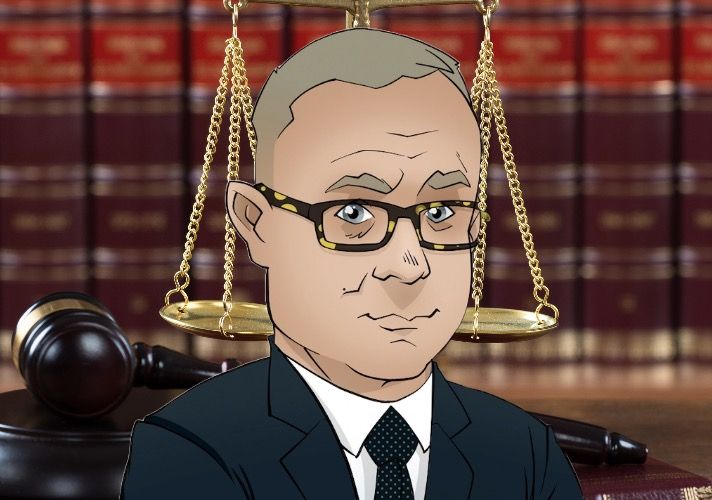

If we don’t win, you don’t pay.
NO WIN – NO FEE

ON CALL 24/7

U.S. Marine

Unlike actual cause, the proximate cause could be a situation where more than one factor caused injury or harm. It could be a situation where there’s a rainy day, and the plaintiff auto driver is out on the road, but the car in front of him is being driven by a man who just recently changed his oil and noticed that he had a leaky seal.
And he knew that he was leaking oil, but he decided to go out on the road to begin with. The cause of the spin-out resulting from the oil mixed oil and water is the actual cause. But the defendant’s attorney may argue that your car would have lost control anyway because of rainwater on the road. But the plaintiff’s attorney would correctly point out that the mixture of the rain and the oil caused the spin out.
-
Video Transcript - What is ‘Proximate Cause’ Under Tort Law?
Video Transcript - What is ‘Proximate Cause’ Under Tort Law?
0:00 What is proximate cause under tort law?
0:03 Well, unlike actual cause, proximate cause
0:07 could be a situation where there is more
0:10 than one factor that caused the injury
0:13 or harm. It could be a situation where
0:17 There’s a rainy day, and the plaintiff
0:19 auto driver is out on the road. But the
0:22 car in front of them is being driven by
0:24 a man who just recently changed his oil
0:26 and noticed that he had a leaky seal and
0:28 he knew that he was leaking oil. But he
0:30 decided to go out on the road. To begin
0:32 with, the cause of the spin-out that
0:35 would result from the oil and water
0:37 being mixed would be the actual cause.
0:39 But the defendant’s attorney may argue
0:42 that your car would have lost control
0:43 anyways, because there was rainwater on
0:45 the road. But the plaintiff's attorney
0:48 would correctly point out that it was
0:49 the mixture of the rain and the oil
0:51 which caused the spin-out. And as a
0:54 result the proximate cause of the injury
0:56 was the oil. And because of that, the
0:59 plaintiff’s attorney can then sue for a
1:02 breach under negligence principles. [Music]"
As a result, the proximate cause of the injury was the oil; because of that, the plaintiff’s attorney can then sue for a breach under negligence principles. A victim of negligence by another person or entity may be entitled to both economic and non-economic damages. The plaintiff in a negligence claim must prove, among other things, that the defendant’s breach of duty was the actual and direct cause of his or her injuries. Additionally, he or she must prove the breach of duty and the damages.
The actual cause term, usually referred to as “cause in fact,” is simple. When a bus strikes a car, the bus driver’s actions cause the accident. Proximate cause refers to a “legal cause,” or one the court has determined to be the primary cause of the harm. It might not be the very last thing that happens before an injury happens, nor might it be the initial thing that started a chain of events that led to the injury. Instead, it is an action that produces foreseeable consequences without intervention from anyone else. To put it another way, the plaintiff will need to demonstrate that the harm was a natural and direct foreseeable result of the proximate cause, without which the harm would not have happened.
Understanding the legal concepts involved in a personal injury case can be daunting without the correct legal representation. Thankfully, Ehline Law Firm’s attorneys have years of experience with various personal injury situations, and we can easily impose liability. We can assess your situation and help you decide how to proceed, whether you were hurt in a car accident, on someone else’s property, or by a medical professional.
“But For” Test
When determining whether an incident led to the plaintiff’s injury, several states use the “but for” rule. This criterion considers whether the injury would not have happened but for the defendant’s negligent act or omission. The element of causation is established when it is shown that an injury would not have occurred if the defendant had not acted in the way he or she did. As an example, if a drunk motorist had not been driving while intoxicated, the pedestrian would not have suffered a severe brain injury and extensive hemorrhage when crossing the street. It is foreseeable that a driver who is intoxicated and swerving through traffic will harm a pedestrian.
However, a defendant cannot be held liable for completely unforeseeable injuries. The pedestrian’s injuries are probably not the result of drunk driving if the same driver strikes an explosives-filled warehouse and an explosion causes oncoming vehicles to rubberneck and hit the pedestrian.
“Substantial Factors” Test
Further, the “substantial factor” test is applied to causation in other states. According to this rule, the court will consider whether the defendant’s actions or omissions played a significant role in the victim’s injury. A substantial factor is one that substantially contributes to the incidence of an injury in jurisdictions that apply the substantial factor test. An action contributes materially when its causative effects are in operation until the moment of injury. Furthermore, an act or omission that just slightly influences the likelihood of an injury is not a substantial factor and will not be regarded as the injury’s cause.
Proximate Cause
The event or action that is most directly responsible for causing injury is known as the proximate cause. This does not imply that it is the act that had occurred closest in time to the injury. Rather, it is the main or predominant cause of the harm. There must be evidence that a defendant’s action was the direct causation of the plaintiff’s injury in order to establish legally sufficient liability. Proximate causation restricts the extent of a defendant’s liability because each conduct has the potential to start off a long chain of unforeseen consequences.
Efficient Proximate Cause Doctrine
Furthermore, the “efficient proximate cause doctrine” has been incorporated into legislation, according to the California Supreme Court’s interpretation of Cal. Ins. Code sections 530 and 532. This means that if a covered risk was the efficient proximate cause of a loss that was brought on by a combination of covered and expressly excluded risks, the loss is covered.
When Is Negligent Conduct the Proximate Cause of a Harm?
The plaintiff must be someone whom the defendant could reasonably expect to be injured by a negligent act in order for the sort of injury to be foreseeable. Furthermore, the defendant’s negligence must have contributed directly to the harm, and there must be some connection between the defendant’s actions and the injury they cause. This can be the case if an unforeseen intervening agent or circumstance contributes to the harm (it would break the causal connection required to hold a defendant liable). Additionally, the jury will have to make this final decision.
Examples of Proximate Cause in a Case Involving Personal Injury Suffered
Proximate causation is present if a person’s actions only cause injuries. For example, if a driver causes harm to another after running a red light and colliding with a vehicle with a green light, the driver is responsible for stopping. Their actions directly, therefore proximately, caused the injuries to the other driver.
However, proximate causes are not always present in personal injury cases. The reason for their accident would be remote, like in the case of the motorist mentioned above, who swerved to avoid the reckless driver but later crashed into a parked car a few blocks away as a result of stress related to the near-crash.
Understanding the Proximate Cause
Essentially, the following questions should be taken into account when determining whether a cause is proximate:
- Could the defendant have predicted the kind of damage done?
- Is the injury’s severity foreseeable?
- Were the injuries predictable?
- Could the plaintiff have predicted that the defendant’s actions would have harmed them?
Comparative fault in California can only be established when proximate causation is present. Furthermore, comparative fault is modified in California. This implies that a person’s ability to recover damages is based on how much of the fault they bear.
If, for example, a premises liability victim was at fault for 30% of their accident, they could only seek compensation from the opposing party for 70% of their accident.
What Do I Need to Prove in a Personal Injury Case to Hold the Defendant Liable?
You must allege and prove factors other than causation in order to hold someone accountable for your personal injury.
There are four specific elements that a plaintiff must submit and prove for each negligence cause of action:
- The defendant had a duty.
- The defendant breached that duty.
- The defendant’s negligence caused (both cause in fact and proximate cause) the plaintiff’s injuries or injury.
- The plaintiff suffered tangible damages as a result of the events, either economic or non-economic damages.
It will take a lot of research, legal analysis, and resources to make your case on each of these points. Our team can guide you through the entire procedure because we have experience in all areas.
If the injured party can prove that the defendant was responsible for the accident, they may be entitled to compensation and avoid liability. They must prove the proximate cause elements above in order to do so. Thereafter, they are able to get relief and compensation for all of their losses, including the following: economic damages, non-economic damages, wrongful death damages, and punitive damages.
To speak with a lawyer and arrange a free consultation, get in touch with us. We can investigate how the accident injured you and consider our options for seeking relief and compensation under California law.
Take Legal Action for Your Harm and Proximate Cause
Our attorneys are ready for you if you’re prepared to submit a personal injury claim for proximate or actual cause in California. We’ll simplify the procedure for you to focus more on healing and regaining control of your life. Contact our office right now to learn more about how we may assist you in seeking compensation for your accident-related losses by dialing (213) 596-9642.
-
Accordion Index - Videos
- What is ‘Volenti Non Fit Injuria‘ in a civil claim?
- What are the basic issues in right to privacy?
- What is ‘Negligent Infliction of Emotional Distress’ Under Tort Law?
- What is ‘Proximate Cause’ Under Tort Law?
- What is a ‘Breach Causing Harm in Fact’ Under Tort Law?
- What is a ‘Breach of Duty of Care’ Under Tort Law?
- What is ‘Standard of Care’ Under Tort Law?
- What are the Elements of Negligent Torts?
- What is a ‘Tort of Negligence’?
- What is a ‘Conversion’ Under Tort Law?
- What is an ‘Attractive Nuisance’ Under Tort Law?
- What is a ‘Nuisance’ Under Tort Law?
- What is ‘Trespass to Chattels’ Under Tort Law?
Main Practice Areas
Recent Posts
- Life Expectancy for Spinal Cord Injuries in the U.S by Severity and Age
- How to File a Caltrans Claim for Damages
- Can I Sue for Popcorning Injuries? The Prank That Kills/Maims
- IIHS and NHTSA Crash Test Program Differences? | What You Must to Know
- Skydiving Photographer Killed After Accident Involving Plane’s Propeller

